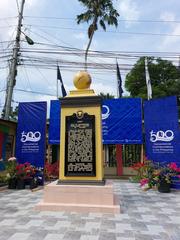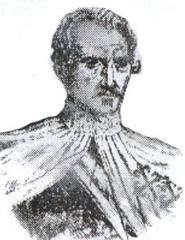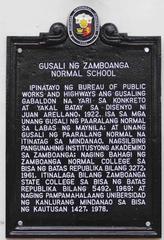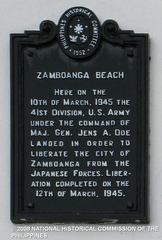Universidad de Zamboanga Visiting Hours, Tickets, and Guide to Zamboanga City Historical Sites
Date: 04/07/2025
Introduction
Situated in the vibrant heart of Zamboanga City, the Universidad de Zamboanga (UZ) is a beacon of academic excellence, cultural heritage, and historical significance. Since its founding in 1948 as Zamboanga Arturo Eustaquio Colleges, UZ has evolved into a leading educational institution, serving a diverse student population across Western Mindanao. The university’s campuses showcase a blend of historic architecture and modern facilities, making it not only an academic landmark but also a focal point for visitors interested in the rich tapestry of Zamboanga City’s history and culture (Study Abroad Aide; Wikipedia; Zamboanga City Tourism).
This comprehensive guide provides visiting hours, ticketing details, practical travel tips, and insights into the university’s significance, as well as a curated overview of nearby historical sites. Whether you are a tourist, scholar, or prospective student, Universidad de Zamboanga offers an immersive gateway to the city’s heritage.
Table of Contents
- Introduction
- History and Founding
- Academic Growth and Campus Life
- Visiting Universidad de Zamboanga: Hours, Tickets, and Accessibility
- Guided Tours and Visitor Experience
- Cultural Events and Photographic Spots
- Infrastructure and Recognition
- Universidad de Zamboanga Monument: Visitor’s Guide
- Discovering Fort Pilar: A Historical Landmark
- Nearby Attractions in Zamboanga City
- Practical Visitor Tips and FAQs
- Visuals and Interactive Elements
- Conclusion and Call to Action
- References
History and Founding
Founded in 1948 as Zamboanga Arturo Eustaquio Colleges, Universidad de Zamboanga was established to address the growing demand for higher education in the region. The institution’s early mission prioritized accessibility and inclusivity for marginalized and indigenous communities. Over time, UZ expanded its offerings from initial courses in law, arts, and education to include specialized fields such as criminology, accountancy, agricultural business, and allied medicine (Study Abroad Aide; Wikipedia).
Academic Growth and Campus Life
From a single campus, UZ has grown to encompass eight campuses throughout Western Mindanao, underscoring its commitment to regional development and workforce readiness. The main campus features state-of-the-art laboratories, libraries, sports complexes, and cultural centers. The Summit Centre, a 10,000-seat arena, regularly hosts sporting events and citywide cultural festivals, making UZ a hub for both academic and community life (PhilScholar).
Student life at UZ is vibrant, marked by multicultural events that celebrate the region’s Chavacano, Tausug, Yakan, and Visayan heritage. The university’s mascot, the Wildcat, symbolizes school spirit during parades and competitions. Outreach programs in collaboration with organizations like the SM Foundation provide scholarships and mentorship, reinforcing UZ’s social mission (SM Foundation).
Visiting Universidad de Zamboanga: Hours, Tickets, and Accessibility
- Visiting Hours: Monday to Saturday, 8:00 AM to 5:00 PM (closed on Sundays and public holidays).
- Admission: General campus access is free. Some special events or exhibitions may require tickets, available via the university’s public affairs office.
- Accessibility: The campus is wheelchair accessible, with ramps, elevators, and designated parking. Assistance is available upon request.
Guided Tours and Visitor Experience
Guided tours can be arranged by contacting the university’s alumni or public affairs office in advance. Tours highlight UZ’s historical landmarks, academic halls, the Summit Centre, and the Criminology Academy. Visitors are encouraged to explore heritage markers and archival displays that chronicle the university’s role in the region’s development (Study Abroad Aide).
Cultural Events and Photographic Spots
UZ regularly hosts academic symposia, cultural festivals, and community outreach programs, showcasing local music, cuisine, and traditions. The campus is replete with scenic spots ideal for photography, including historic buildings, landscaped gardens, and panoramic city views.
Infrastructure and Recognition
The main campus blends historic and modern architecture. UZ is accredited by the Commission on Higher Education (CHED) and has received recognition for academic rigor and environmental leadership, such as the Hall of Famer Award for Energy Leadership in 2017 (Wikipedia). Partnerships with CHED and the SM Foundation further enhance its educational quality and student support.
Universidad de Zamboanga Monument: Visitor’s Guide
History and Significance
The Universidad de Zamboanga Monument stands as a testament to the institution’s pivotal role in education and community development within Zamboanga Peninsula. Erected in 1968, the monument honors UZ’s legacy of accessibility and socio-cultural impact.
Monument Features
The monument is a sculptural tribute to academic achievement and community spirit, reflecting Filipino design and local heritage. Informational plaques provide historical context and highlight the university’s milestones and notable alumni.
Visiting Information
- Location: Main Campus, Universidad de Zamboanga
- Hours: Monday to Saturday, 8:00 AM to 6:00 PM
- Admission: Free
- Guided Tours: Available upon request
Accessibility & Facilities
Wheelchair-accessible paths, rest areas, and informational kiosks are available. Visitors should wear comfortable shoes and bring water during warmer months.
Events
Commemorative events, cultural festivals, and academic ceremonies are regularly held at the monument, offering immersive cultural experiences.
Nearby Attractions
- Pasonanca Park: Ideal for nature walks and picnics
- Fort Pilar Shrine: A 17th-century Spanish fort and religious landmark
- Zamboanga City Hall: An architectural gem reflecting the city’s history
Discovering Fort Pilar: A Historical Landmark
Fort Pilar, officially Real Fuerza de San Jose, is one of Zamboanga City’s most important cultural monuments. Constructed in 1635 to defend against pirate raids, it has become a symbol of the city’s resilience and religious devotion (Zamboanga City Tourism Office).
- Hours: Daily, 8:00 AM to 5:00 PM
- Admission: Free (donations welcome)
- Attractions: Fort Pilar Shrine, Zamboanga City Museum, scenic coastal views
- Accessibility: Ramps and pathways for visitors with mobility needs; public transport and parking available
- Visitor Tips: Modest attire for shrine visits, best visited in the morning for cooler weather and fewer crowds
After exploring Fort Pilar, visitors can enjoy Paseo del Mar, Museo de Zamboanga, and Cawa-Cawa Boulevard for a full historical and cultural experience (Detourista; Discover the Philippines).
Nearby Attractions in Zamboanga City
UZ’s central location makes it an excellent starting point for exploring:
- Great Santa Cruz Island: Known for pink sand beaches
- Yakan Weaving Village: Showcasing traditional weaving
- Zamboanga Cathedral and Tetuan Church: Landmarks of the city’s Catholic heritage
- Local Markets: Offering regional crafts and cuisine
These attractions provide visitors with a deeper understanding of Zamboanga’s multicultural fabric and dynamic urban life.
Practical Visitor Tips and FAQs
- Safety: Zamboanga City has improved safety in tourist areas. Remain vigilant, avoid isolated areas at night, and consult local guides (Wikivoyage).
- Accommodation & Transport: A range of hotels and guesthouses are available near UZ. Public transportation includes jeepneys, tricycles, and taxis.
- Guided City Tours: Several local operators offer city tours that include UZ and key landmarks (The Poor Traveler).
Frequently Asked Questions
Q: What are the visiting hours for Universidad de Zamboanga?
A: Monday to Saturday, 8:00 AM to 5:00 PM; closed Sundays and holidays.
Q: Is there an entrance fee?
A: General campus and monument access are free; some events may require tickets.
Q: Are guided tours available?
A: Yes, book through the university’s alumni or public affairs office.
Q: Is the campus accessible for persons with disabilities?
A: Yes, with ramps, elevators, and parking.
Q: What other sites are nearby?
A: Fort Pilar, Pasonanca Park, Yakan Weaving Village, Paseo del Mar, and more.
Visuals and Interactive Elements
Enhance your visit with virtual tours, campus maps, and photo galleries available via the official UZ website and social media channels. Look for QR codes on-campus for multimedia content and historical narratives.
Conclusion and Call to Action
Universidad de Zamboanga is more than an academic institution—it is a living monument to the city’s educational innovation, cultural diversity, and historical depth. Visitors enjoy free access, guided tours, and proximity to Zamboanga City’s most treasured sites. For a seamless and enriching experience, plan your visit in advance, explore the university’s event calendar, and discover the city’s vibrant heritage. For updates and additional resources, download the Audiala app and connect with official tourism platforms.




